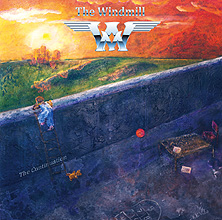 Progressive
rock keeps on growing and expanding with the 2013 CD from Norway’s
recent musical heroes, The Windmill. Norway is, and has always
been an excellent country for music—from jazz to rock and classical—a
fact that has been proven time and again especially in recent years.
With The Continuation, the second album from The Windmill,
that fabled Scandinavian prog-rock sound resounds big time. The Windmill’s
expertise exists within the framework composite of catchy, melodic
pop-rock with more complex, extended prog-rock tracks—some of
which range in length from ten minutes up to 25 minutes. Some musicologists
have compared The Windmill to the smooth prog-rock of Camel or even
the in-depth, extended track sound of Genesis for example, but there’s
also an intriguing originality in play on The Continuation.
The songs of vocalist / keyboardist Jean Robert Viita are often
right on target and the band’s harmony vocals add a nice touch
as does the guitar work of both Erik Borgen and Stig Andre
Clason. The Continuation is well recorded and the eye-popping
album artwork is first rate. In fact, the whole band—also including
Sam Arne Nøland (drums), Arnfinn Isaksen (bass)
and Morten Clason (flute, sax)—contributes a wealth of
musical colors and flavors. The best way to appreciate the sound of
The Continuation is to listen uninterrupted several times to
fully appreciate the vast amount of musical ideas in play here. Sonically,
compositionally and conceptually, The Windmill is clearly moving in
the right direction with their second full length album release. www.TheWindmill.no
Progressive
rock keeps on growing and expanding with the 2013 CD from Norway’s
recent musical heroes, The Windmill. Norway is, and has always
been an excellent country for music—from jazz to rock and classical—a
fact that has been proven time and again especially in recent years.
With The Continuation, the second album from The Windmill,
that fabled Scandinavian prog-rock sound resounds big time. The Windmill’s
expertise exists within the framework composite of catchy, melodic
pop-rock with more complex, extended prog-rock tracks—some of
which range in length from ten minutes up to 25 minutes. Some musicologists
have compared The Windmill to the smooth prog-rock of Camel or even
the in-depth, extended track sound of Genesis for example, but there’s
also an intriguing originality in play on The Continuation.
The songs of vocalist / keyboardist Jean Robert Viita are often
right on target and the band’s harmony vocals add a nice touch
as does the guitar work of both Erik Borgen and Stig Andre
Clason. The Continuation is well recorded and the eye-popping
album artwork is first rate. In fact, the whole band—also including
Sam Arne Nøland (drums), Arnfinn Isaksen (bass)
and Morten Clason (flute, sax)—contributes a wealth of
musical colors and flavors. The best way to appreciate the sound of
The Continuation is to listen uninterrupted several times to
fully appreciate the vast amount of musical ideas in play here. Sonically,
compositionally and conceptually, The Windmill is clearly moving in
the right direction with their second full length album release. www.TheWindmill.no
mwe3.com presents an interview with
Jean-Robert Viita of THE WINDMILL
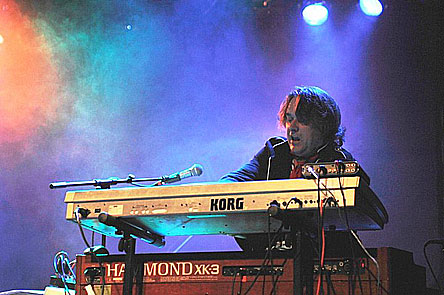 mwe3:
Can you tell us where you’re from originally and where you live
now and what you like best about it?
mwe3:
Can you tell us where you’re from originally and where you live
now and what you like best about it?
Jean-Robert Viita: I ws born in a small city called Asker in
Norway, not far from where I live now. I live with my family in a
place just a 30 minutes drive from Oslo, called Røyken. It’s
out in the countryside, and an ideal place to raise kids. Now our
two kids are grown up and moved out so my wife and I have lots of
space to create art and music. But we would like to move closer to
a small town as we both are quite urban. We’ll see what happens.
Unfortunately we both have to work regular jobs in order to pay our
bills, and we live close to our jobs which is good. We also live 5
minutes away from our rehearsal venue so that’s very handy.
mwe3: What instruments do you play and what was your early
musical education like?
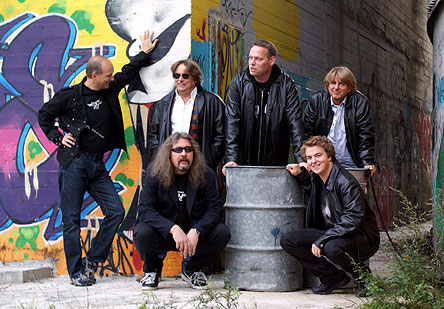 Jean-Robert
Viita: I play the keyboards and my favorite must be the Hammond.
I have no formal musical education apart from a six month organ course
at the age of 12. So you can say I’m basically self-taught. I
played the bass guitar for a short while in my youth, but that’s
so long ago that it’s of no use apart from when I do arrangements.
Jean-Robert
Viita: I play the keyboards and my favorite must be the Hammond.
I have no formal musical education apart from a six month organ course
at the age of 12. So you can say I’m basically self-taught. I
played the bass guitar for a short while in my youth, but that’s
so long ago that it’s of no use apart from when I do arrangements.
mwe3: What were some of your main influences in music and is
there an era in music history that appeals to you more than others
and why?
Jean-Robert Viita: I was a teenager in the 1970’s, and
of course I’m colored by that, so yes that must be the musical
era that appeals most to me. I have so many influences, from Deep
Purple, Uriah Heep, Genesis, Camel, Pink Floyd, Steely Dan etc. via
Burt Bacharach to Tchaikovsky and Bach. It’s impossible for me
to pick out any main influences without mentioning Jon Lord of Deep
Purple, and Tony Banks of Genesis. But apart from those two, there
are so many others. We have often heard that we are inspired by Camel,
so I guess that must be right then...
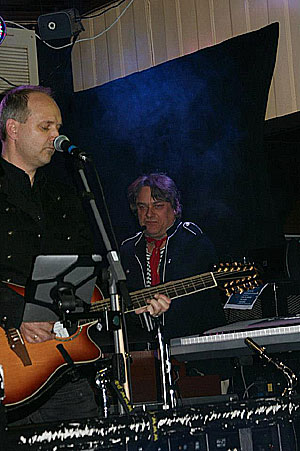 mwe3:
When did The Windmill start as a band and can you tell us who plays
in the band with you on the 2013 CD release of The Continuation
CD? What’s the chemistry like between you and the other musicians
in The Windmill?
mwe3:
When did The Windmill start as a band and can you tell us who plays
in the band with you on the 2013 CD release of The Continuation
CD? What’s the chemistry like between you and the other musicians
in The Windmill?
Jean-Robert Viita: The Windmill started as a project in 2001,
after I had been looking around for people with the same taste and
interest in progressive symphonic music as myself. I found them, one
after the other, but it didn’t really start to take shape until
some years later when we began recordings just for the fun of it.
We also started to rehearse during that period, and I think the formation
grew steadily until around 2005-ish when we suddenly had quite a stable
lineup. Our first gig was in 2007. Around 2009 our drummer decided
to quit, but he had laid down all the drum tracks for our debut-album
To Be Continued so we managed the recording sessions without
him. We needed a drummer though, so I managed to persuade my old childhood
friend Sammi, to pick up his sticks again after a 20 year rest, and
he’s still in the band. Just before the release of the debut
album our lead-guitarist called it a day, and Morten’s son, Stig
Andre joined us. So now the lineup has been steady from 2010. They
are all playing on The Continuation.
The lineup is as follows:
Arnfinn Isaksen: bass (original member)
Morten Clason: flutes, saxophones, acoustic guitar, some keys, vocals,
backing vocals (original member)
Erik Borgen: guitars/lead guitars, lead vocals/backing vocals (original
member)
Sam Arne Nøland: drums (from 2009)
Stig Andre Clason: lead guitars/guitars (from 2010)
Jean Robert Viita: keys, backing vocals/vocals (original member)
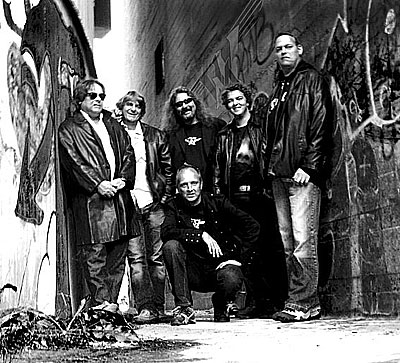 The chemistry
is the best I have ever experienced in a band. These guys are all
serious, and with a great sense of humor. Of course we can have discussions,
but we try to never get down an idea, until it’s tested several
times. They all seem to know how it’s supposed to sound, and
how to get the sound. It’s like we all read each other loud and
clear without having to say a word.
The chemistry
is the best I have ever experienced in a band. These guys are all
serious, and with a great sense of humor. Of course we can have discussions,
but we try to never get down an idea, until it’s tested several
times. They all seem to know how it’s supposed to sound, and
how to get the sound. It’s like we all read each other loud and
clear without having to say a word.
mwe3: Tell us how you balance the song writing and vocals with
Morten and Erik Borgen, for instance on “The Masque”, which
was written by Morten and Erik and on “Giant Prize”, which
you wrote yet the vocals were shared by you and Morten. That seems
like a strong point in the band; the fact that all the musicians are
well rounded. What do you think?
Jean-Robert Viita: I think you are right. The main issue here
is that we have come to the point that the whole band participates
in the arrangements, and they all have ideas, and no one is afraid
to express them. If you take “The Masque”, Morten came with
the basic song and lyrics for part one and two, and Erik and Arnfinn
had ideas to take part two, the instrumental bit, even farther. Then
we all sat down and arranged the whole thing together.
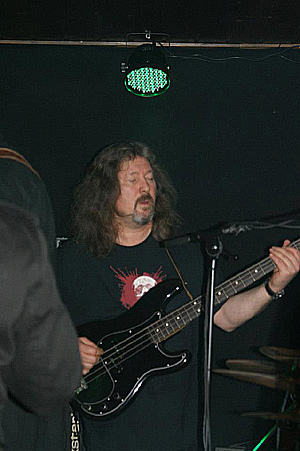 For “The
Giant Prize”, I initially wanted Erik to sing that, but it suited
Morten better, and someone asked why not try with both Morten and
me together? Okay, we thought, let’s give it a try. The whole
song is actually meant to be a little “joke” if I may say
so. It’s not a serious tune, and we recorded it just for fun,
and to loosen up a little bit amongst the otherwise more “serious”
matters taken up by the rest of the album.
For “The
Giant Prize”, I initially wanted Erik to sing that, but it suited
Morten better, and someone asked why not try with both Morten and
me together? Okay, we thought, let’s give it a try. The whole
song is actually meant to be a little “joke” if I may say
so. It’s not a serious tune, and we recorded it just for fun,
and to loosen up a little bit amongst the otherwise more “serious”
matters taken up by the rest of the album.
We are trying to appear as a band, where everyone is a part of the
band and not just a backing-musician for a front artist. All of us
get our credits and when it comes to guitar solos, both Erik and Stig
Andre share them quite equally amongst each other. We have neither
room nor patience for selfish “egos” in this band.
mwe3: What does The Continuation mean to you musically
and artistically and how does the album compare to the first album
by The Windmill? In what ways has the sound of The Windmill progressed
over the past 5 years?
Jean-Robert Viita: I guess both our albums mean quite a lot
to me personally, as I have been carrying many of the ideas around
for many years. The Continuation I think is better played,
and more thought through than our debut. We learnt a lot during the
recording process of the first album and we used that experience on
the latter. Another huge difference is that on the first album, we
sort of wrote and arranged the songs as we proceeded and while we
were recording. On The Continuation we had already played all
the songs many times live, and also arranged them before we started
the recordings. In that way it was easier and the whole process went
much faster and smoother. I’m not that convinced that the sound
is much different from the first, as this is what we sound like, but
I think it’s fair to say that we might sound a bit more secure
now.
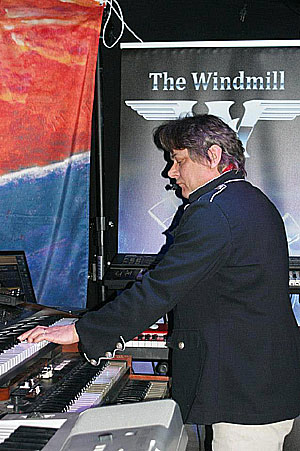 mwe3:
Can you tell us about your gear, keyboards and other instruments you
play on the new album? Do you play other instruments too?
mwe3:
Can you tell us about your gear, keyboards and other instruments you
play on the new album? Do you play other instruments too?
Jean-Robert Viita: I use a Hammond XK-3 with a Leslie speaker.
I also use a vintage Yamaha DX7-FD II from the mid-1980’s. As
for the piano sounds I use a Clavia Nord 88 Stage-piano, and for the
strings and “Moogish” sounds I use different sound banks
and plug-ins through my Apple, and a program called Mainstage. I also
use a Roland keyboard for live gigs in order to easily access strings
and other sounds. I have lately purchased a mellotron plugin from
GForce, but I got that one after we’d finished the recordings
so none of that is on the album, but it will be on the next. I tend
to love the vintage sounds, and this plugin really sounds vintage.
I do not really play any other instruments, even though I do fool
around a little with bass guitar, my son’s guitar or drums, when
no one is listening. But in order to arrange all these different instruments
on my computer, when writing and recording demoes for the band, it’s
nice to have an idea about how to play them.
mwe3: There’s a great balance of both progressive rock
and instrumental prog-rock on The Continuation album. How do
you balance and combine the various music styles throughout the album?
Jean-Robert Viita: Thank you. It’s nothing we really think
about. It just comes naturally. If we think that one instrumental
piece gets too long, we usually feel it, and tend to get some vocals
in. I haven’t got any clear answer to that question. It just
happens...
mwe3: The artwork for The Continuation album is excellent.
Who did the album design and is there a theme to the artwork for The
Continuation album?
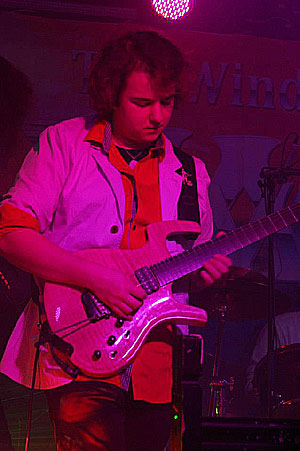 Jean-Robert
Viita: I am so lucky that I’ve been married to a fantastic
woman, Kirsten for some 26 years, and she happens to paint very well.
When the rest of the guys in the band saw her paintings already before
the release of our first album, they wanted some of her pictures to
be on the CD cover. So we used a painting she’d already done
years before the release, and it was only natural to ask her to do
the next cover as well. She then made a painting to each track for
the The Continuation album as the inlet shows. Our guitarist
Stig Andre put it all together and off it went to the press. The front
cover for this CD was already made before the first album came out,
and we decided then back in 2008 or so, that this painting should
be the cover for the next release. So you can say it was decided well
in advance. We are very lucky though to have people like that amongst
us.
Jean-Robert
Viita: I am so lucky that I’ve been married to a fantastic
woman, Kirsten for some 26 years, and she happens to paint very well.
When the rest of the guys in the band saw her paintings already before
the release of our first album, they wanted some of her pictures to
be on the CD cover. So we used a painting she’d already done
years before the release, and it was only natural to ask her to do
the next cover as well. She then made a painting to each track for
the The Continuation album as the inlet shows. Our guitarist
Stig Andre put it all together and off it went to the press. The front
cover for this CD was already made before the first album came out,
and we decided then back in 2008 or so, that this painting should
be the cover for the next release. So you can say it was decided well
in advance. We are very lucky though to have people like that amongst
us.
mwe3: What do you like best about progressive rock and the
expansive nature of writing long pieces of music? It seems that the
spirit of the 1970s never died and if anything it’s been improved
upon with The Windmill.
Jean-Robert Viita: (laughter), I always liked long epic pieces,
even though it’s hard to get any airplay these days if a track
is more than 3 minutes. I used to listen to “Echoes” from
the Pink Floyd album Meddle, and just dream away. I remember
being so impressed by that. Imagine a whole LP side just with one
song.
Nowadays I feel that it gives us time to express our ideas, without
having to skip anything good. That’s the best thing about the
whole progressive rock genre. You can jump from one style to another
within the same piece, and nobody argues about it. Everything is allowed,
and even if you’re not sticking to the old fashioned, so called
rules within music, it seems to be perfectly okay.
You know, music was made long before man could write down the scores
and invent “rules” about how music should sound. In prog,
there are few rules and no limitations.
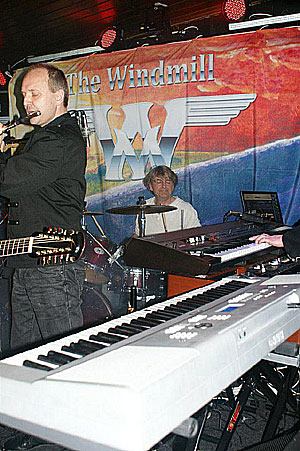 mwe3:
Was the most challenging piece of music on the new CD the album closing
track called “The Gamer”? It’s a 25 minutes long masterpiece.
What does the track signify to you and how did you and the band arrange
the track to fit into place so perfectly?
mwe3:
Was the most challenging piece of music on the new CD the album closing
track called “The Gamer”? It’s a 25 minutes long masterpiece.
What does the track signify to you and how did you and the band arrange
the track to fit into place so perfectly?
Jean-Robert Viita: Again thank you. You are very kind. It may
sound a bit strange, but I don’t think “The Gamer”
was the most challenging piece of the album. The one we struggled
the most with to get right was actually the track called “Not
Alone”
That one took a while to get right. I can’t remember why exactly,
but we worked on that one for a serious amount of time, until we decided
to record it, but suddenly all the pieces fell into place.
About “The Gamer”, that one just came to me. It was like
a natural process and I had the whole piece with lyrics and everything
made, before I introduced it to the rest of the band. Whenever I was
a little unsure about what the different instruments should do, I
just told the guys, “Do something” and they did, as always.
But I think I had the whole piece ready in a week or so.
Of course some adjustments came along during the time from when we
first played it live, until we started recording it, but all in all
it was quite a smooth ride. For the arrangement, it was the same procedure
as always. It just works out when we start playing. Almost nothing
has to be said. The guys just start to play, and all of a sudden one
of them, or me, just stops and asks. “what about doing it this
or that way?” We’ll have a run through it a couple of times
and it soon gets clear whether the idea will work or not. It sounds
amazing, and it truly feels like a blessing to be allowed to work
with people like that.
 As for
the meaning of the lyrics, I read about people who get so addicted
to computer games that nothing else in life seems to matter. It’s
like a drug or alcohol addiction. Scientists around the western world
are concerned about the physical shape lots of young people are in,
as they don’t get any exercise, and they are hardly ever out
in the real world. Of course some of these people are really clever,
and the mental effect that computer games can have on people can be
very positive, but it depends on how much of your life you spend on
it.
As for
the meaning of the lyrics, I read about people who get so addicted
to computer games that nothing else in life seems to matter. It’s
like a drug or alcohol addiction. Scientists around the western world
are concerned about the physical shape lots of young people are in,
as they don’t get any exercise, and they are hardly ever out
in the real world. Of course some of these people are really clever,
and the mental effect that computer games can have on people can be
very positive, but it depends on how much of your life you spend on
it.
The “song” is really just a result of some thoughts and
worries I feel about the growing-up generation. But then again, I’m
not too worried about it, as the majority of young people today are
much smarter than our generation was when growing up. If my kids had
done some of the same shit as we did when growing up, I would have
been slightly more worried.
mwe3: There seems to be an abundance of musical talent in Norway
in the 21st century. How has The Windmill been received in Norway
and can you tell the readers about today’s Norwegian music scene?
Does it go all the way to classical masters like Edvard Grieg? What
are some of your other favorite Norwegian musicians and bands these
days?
Jean-Robert Viita: Oh there are lots of musical talent in Norway
as in the rest of Scandinavia. We have a lot of prog bands which are
really good. Some examples are: White Willow, Pymlico, Adventure,
Morild, Fatal Fusion, When Mary, Magic Pie, Airbag, Kerrs Pink, and
many more. When it comes to favorite bands, it’s impossible to
mention names, as they are all very good in their own way and style.
I also know quite a few musicians from the other bands mentioned so
I don’t dare to mention any of them specifically... (laughter)
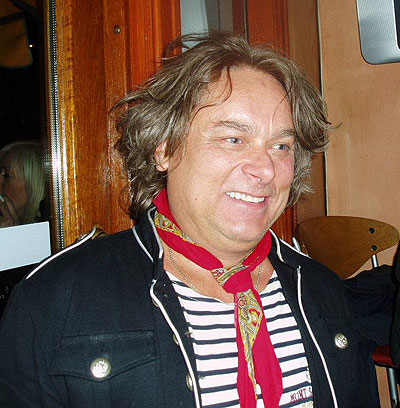 I think
lot of Norwegian and Swedish bands do use quite a lot of folk music
in their compositions. If I should mention some Scandinavian favorites,
I’m tempted to mention the Swedish bands The Flower Kings, and
Kaipa.
I think
lot of Norwegian and Swedish bands do use quite a lot of folk music
in their compositions. If I should mention some Scandinavian favorites,
I’m tempted to mention the Swedish bands The Flower Kings, and
Kaipa.
The reception of The Windmill in Norway is okay, but here as in the
rest of the world progressive rock is not what sells the most. If
you think about the percentage of people buying and listening to prog
in Norway, I’m not so sure that it’s less than anywhere
else, but we are only about 5 million people living here, so of course
it seems like it is a very small amount. We are struggling with the
same problem here as they do everywhere.
The commercial radio stations and the press will never play the music
on radio, or write about it in the major newspapers. I don’t
think that’s typical for Norway though. Thankfully we have the
idealists with their radio shows specially created for this kind of
music, and they do promote us a lot. But then again they are handed
over airtime in the middle of the night, with very limited range,
so it’s not for the masses.
mwe3: What are you next musical mountains to climb? What does
the future hold for The Windmill as we approach 2014? What directions
will you head in next?
Jean-Robert Viita: We have started to compose for our next
album, but we have no date set for any release yet. We are quite relaxed
about it. It will come when we feel ready. Musically I guess we will
continue the path we have started upon, as it seems like that’s
what people like about us, and not the least, that’s what we
like to do.
 We
would like to get out more, and do live gigs around. Maybe find ourselves
a management that can arrange gigs for us so we can concentrate about
making and playing the music. But the most important thing is that
we will continue to have fun with what we are doing. That’s the
main key. When the fun disappears, it’s no use to continue, but
I seriously hope that it will be many many years until we reach that
point, if ever...
We
would like to get out more, and do live gigs around. Maybe find ourselves
a management that can arrange gigs for us so we can concentrate about
making and playing the music. But the most important thing is that
we will continue to have fun with what we are doing. That’s the
main key. When the fun disappears, it’s no use to continue, but
I seriously hope that it will be many many years until we reach that
point, if ever...
Thanks To Jean-Robert Viita @ www.TheWindmill.com



